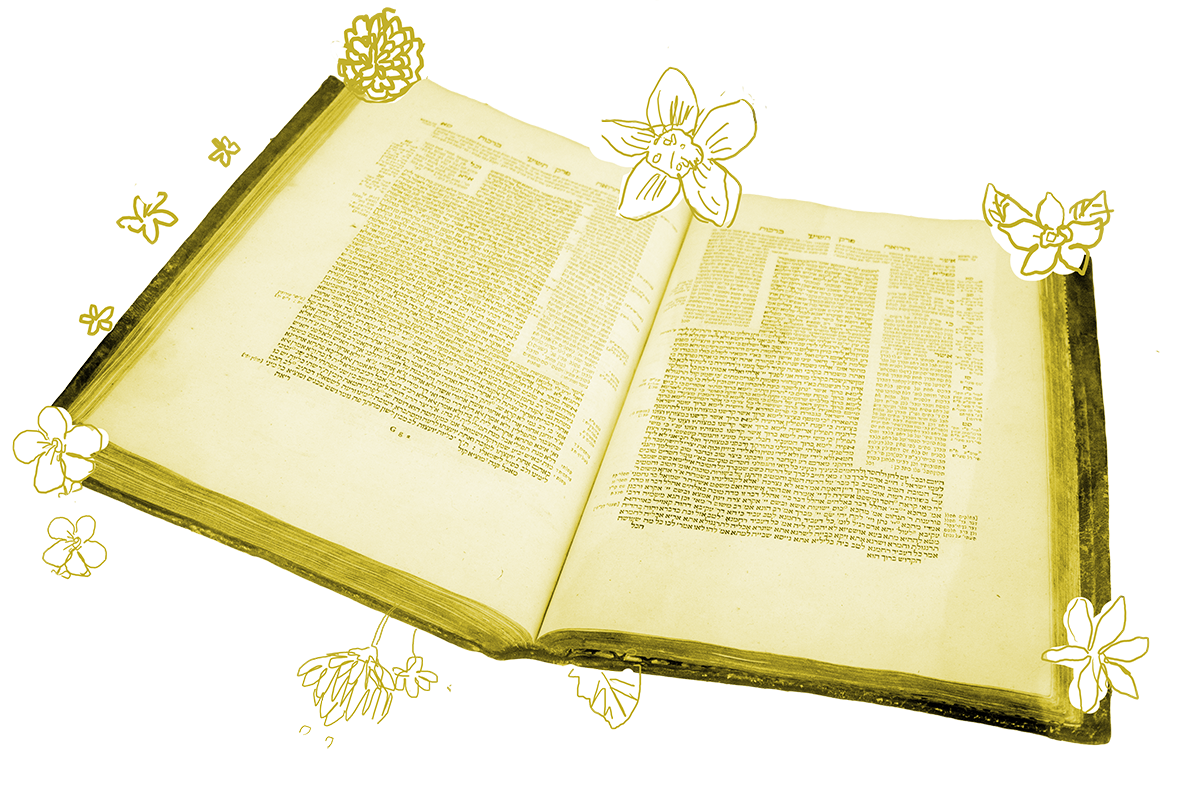Usually, the Mishnah offers legal teachings without historical context. But the mishnah that animates today’s page offers a rare account of the historical moment that certain legal teachings were enacted:
These are the laws (halachot) which they declared in the upper chamber of Hananiah ben Hezekiah ben Gurion, when they went up to visit him. They took a count, and Beit Shammai outnumbered Beit Hillel, and on that day they enacted eighteen measures.
Beit Shammai and Beit Hillel, two major schools of Jewish thought that date to the first century BCE (generations before the destruction of the Temple), were known for their frequent legal disagreements. Beit Hillel generally held more lenient positions — and also usually won the consensus of their rabbinic colleagues.
But on this particularly momentous day in the upper chamber of Hananiah ben Hezekiah ben Gurion’s home, the sages gathered and found that the majority in attendance favored Beit Shammai. On that day, they enacted 18 decrees in accordance with the stricter school.
With your help, My Jewish Learning can provide endless opportunities for learning, connection and discovery.
The eighteen measures are perhaps those listed in the mishnahs that precede this one (at least, this is what the medieval commentator Maimonides thinks) and we’ve already had occasion to discuss a few — namely, various activities like getting a haircut or tanning a hide that should not be begun on Friday afternoon just before Shabbat descends. According to the rabbis of the Talmud however, the 18 decrees have largely to do with detailed matters of purity. But whatever these 18 rulings were, it’s curious to note that here when the Gemara has occasion to comment on the historical context for them, it seeks repeatedly to soften the victory of Shammai.
For instance, on yesterday’s page, the rabbis asserted that it was not Hillel and Shammai, but rather their disciples, who had 18 disagreements that were decided in favor of the school of Shammai. Shammai and Hillel themselves, the later rabbis insist, had only three points of disagreement. Today’s page adds that by the following day, they no longer disagreed at all, but had reached consensus.
Today’s daf also lays out the three disagreements between the great sages themselves — and they are somewhat obscure. The first is what volume of dough requires one to separate challah — a special portion given to the priests in the Temple (this, and not the braided loaf most Jews associate with Shabbat, is the original “challah”). Shammai says one kav (about five cups) of dough requires one to separate challah, while Hillel says two. The Gemara solomonically decides the correct number is one-and-a-half kavs, and later corrects to 1.25 when the measure itself increased (the ancient world lacked an International Bureau of Weights and Measures). The other two disagreements were about measurements for water in a mikveh and details of measuring the duration of niddah, a woman’s menstrual impurity. Again, in both cases, the Gemara sides with neither great sage, but chooses a third option.
Elsewhere, we have seen that when Hillel — clearly the preferred sage — wins an argument, there is rarely hesitation about upholding his view. But in this case, when Shammai, the stricter and less popular figure, has a moment of clear victory, the rabbis are quick to attenuate it.
Read all of Shabbat 15 on Sefaria.
This piece originally appeared in a My Jewish Learning Daf Yomi email newsletter sent on March 21, 2020. If you are interested in receiving the newsletter, sign up here.



